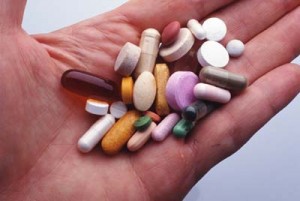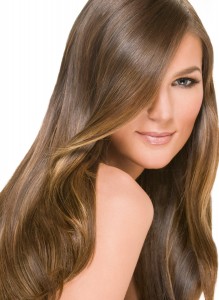
Spring has officially sprung, and it’s time to start planting your spring garden, packed with delicious and nutritious veggies. Yum!
If you’ve never planted a vegetable garden before, or are looking for some new ideas for your existing garden, you’ve come to the right place. Today, we’re going to share some of our favorite veggies that thrive in gardens during the cooler spring months.
Even better, we’re going to share some delicious recipes you can use once your veggies are mature and ready to harvest.
Keep reading to discover the best types of veggies to plant this time of year and a variety of different recipes you can use to make these nutritious veggies taste great!
Lettuce
From iceberg to romaine, spring is the prime season for growing lettuce. In fact, it’s the best time you should have this leafy vegetable in your garden.
That’s because as soon as the weather gets hot, lettuce wilts and dies. So, start planting now!
We recommend growing romaine lettuce in your garden. The darker-colored lettuce varieties tend to have more vitamins and nutrients, like manganese, potassium, biotin, vitamin B1, copper, iron, and vitamin C, and are a very good source of dietary fiber.
Once you’ve harvested your lettuce, try out this delicious lettuce wrap recipe!
Chicken Lettuce Wraps
Ingredients:
- 1-1/2 pounds boneless skinless chicken breasts, cubed
- 1 tablespoon plus 1-1/2 teaspoons peanut oil, divided
- 3/4 cup chopped fresh mushrooms
- 1 can (8 ounces) water chestnuts, drained and diced
- 1 tablespoon minced fresh gingerroot
- 2 tablespoons rice vinegar
- 2 tablespoons reduced-sodium teriyaki sauce
- 1 tablespoon reduced-sodium soy sauce
- 1/2 teaspoon garlic powder
- 1/4 teaspoon crushed red pepper flakes
- 1-1/2 cups shredded carrots
- 1/2 cup julienned green onions
- 12 Bibb or Boston lettuce leaves
- 1/3 cup sliced almonds, toasted
Directions:
#1. In a large nonstick skillet coated with cooking spray, cook chicken in 1 tablespoon oil for 3 minutes; drain. Add the mushrooms, water chestnuts and ginger; cook 4-6 minutes longer or until chicken is no longer pink. Drain and set aside.
#2. In a small bowl, whisk the vinegar, teriyaki sauce, soy sauce, garlic powder, red pepper flakes and remaining oil. Stir in the carrots, onions and chicken mixture.
#3. Spoon onto lettuce leaves; sprinkle with almonds. If desired, fold sides of lettuce over filling and roll up. Yield: 6 servings.
Recipe source: http://www.tasteofhome.com/recipes/chicken-lettuce-wraps
Broccoli
Broccoli is another hardy cool weather veggie, which makes it perfect for springtime planting.
The best part—it’s a very low maintenance plant to grow. As long as you plant it in an area with full access to sunlight and water it every day, you’ll have beautiful broccoli stalks shooting up in your garden before you know it.
Tip: Broccoli does not like hot weather. For this reason, we advise you to pick up partially grown stalks from your local plant nursery so it has time to mature before summer hits.
Once harvested, each stalk is packed with dietary fiber, vitamin B6, vitamin E, manganese, phosphorus, vitamin B1, vitamin A, potassium, and copper. All of these nutrients are vital for a healthy body.
When your broccoli is ready to eat, we recommend trying out this broccoli salad recipe.
Broccoli Salad
Ingredients:
- 1 teaspoon salt
- 5-6 cups fresh broccoli florets (about 1 pound of florets)
- 1/2 cup toasted slivered almonds
- 1/2 cup cooked, crumbled bacon
- 1/4 cup of red onion, chopped
- 1 cup of frozen peas, thawed (or fresh peas if you can get them)
- 1 cup mayonnaise
- 2 tablespoons apple cider vinegar
- 1/4 cup honey
Directions:
#1. Bring a large pot of water, salted with a teaspoon of salt, to a boil. Add the broccoli florets. Cook 1-2 minutes, depending on how crunchy you want the broccoli. 1 minute will turn the broccoli bright green, and leave it still pretty crunchy. 2 minutes will cook the broccoli through, but still firm.
#2. Drain the broccoli and immediately put into a bowl of ice water to stop the cooking. After the broccoli cools, drain it well before dressing it in the next step.
#3. Combine broccoli florets, almonds, crumbled bacon, chopped onion, and peas in a large serving bowl. In a separate bowl, whisk together mayonnaise, cider vinegar and honey.
#4. Add dressing to the salad and toss to mix well. Chill thoroughly before serving.
Recipe Source: http://www.simplyrecipes.com/recipes/broccoli_salad/
Asparagus
Asparagus is a delicious and hardy spring vegetable. The only downside—this type of produce tends to be expensive when you buy it from a grocery store.
The solution: Grow your own at home and save big!
Because asparagus is typically grown from asparagus crowns that you buy at your local garden store, this veggie is pretty easy to grow. It’s also low maintenance, which makes it the perfect vegetable for those who are new to gardening.
On top of being easy to grow, it’s also very nutritious. It’s a very good source of fiber, folate, vitamins A, C, E and K. It also contains chromium, a trace mineral that enhances the ability of insulin to transport glucose from the bloodstream into cells.
Pretty neat!
Personally, my favorite way to consume asparagus is by cooking it on the grill.
Simply coat the asparagus stalks in a little bit of olive oil, then lightly salt and pepper.
Throw the stacks directly on the grill, or use a grill pan, and cook for about 10-15 minutes. The longer you cook the stalks, the softer they will become.
Super easy and delicious!
Tip: You can add whatever seasoning you like to asparagus. Experiment with different seasoning combinations until you find the flavoring you like best!








